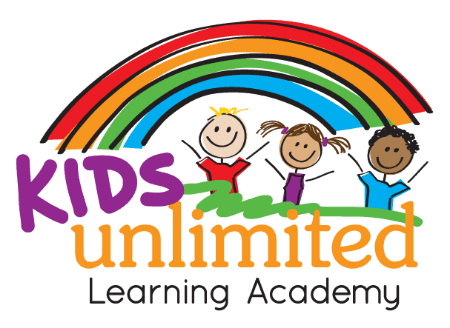Kids Unlimited
Learning Without Tears
Learning Without Tears helps children develop their writing skills through multisensory play. Activities with the Wood Pieces Set, Capital Letter Cards, Mat, Roll-A-Dough Letters, Stamp and See Screen, CDs, Slate Chalkboard, and Blackboard use all of the senses to teach directionality, vocabulary and imitation, positions and sequencing skills. Children move, touch, feel and manipulate real objects as they learn the habits and skills essential for writing. Other multisensory lessons in teachers’ guides use voices, letter stories, door tracing, imaginary writing and mystery letters to teach letter formation and placement on lines.
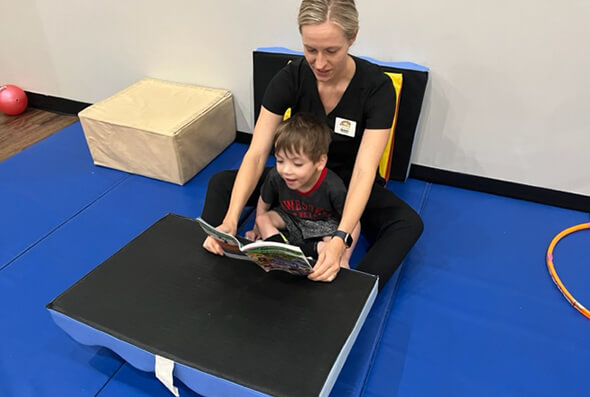
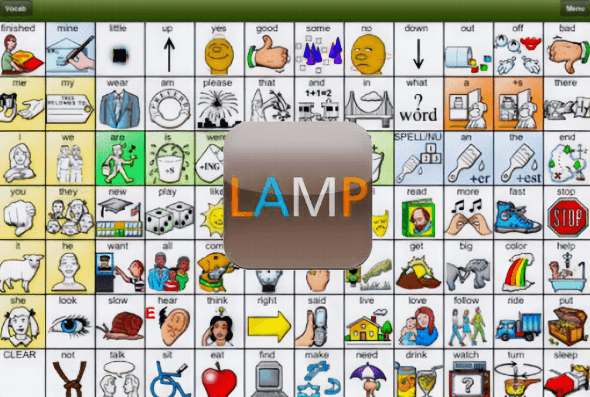
Language Acquisition through Motor Planning (LAMP)
Language Acquisition through Motor Planning (LAMP) is a therapeutic approach based on neurological and motor learning principles. The goal is to give individuals who are nonverbal or have limited verbal abilities, a method of independently and spontaneously expressing themselves in any setting.
LAMP focuses on giving the individual independent access to vocabulary on voice output augmentative and alternative communication (AAC) devices that use consistent motor plans for accessing vocabulary. The teaching of vocabulary happens across environments, with multisensory input to enhance meaning, with the child’s interests and desires determining the vocabulary to be taught.


Picture Exchange Communication System (PECS)
The Picture Exchange Communication System (PECS) allows children who have little or no communication abilities a means of communicating non-verbally. Children using PECS are taught to approach another person and give them a picture of the desired item in exchange for that item. After intensive therapy, children can use PECS to communicate a request, a thought, or anything that can reasonably be displayed or symbolized on picture cards. PECS teaches functional communication that is immediately useful with the long-term goal of spontaneous verbal communication.
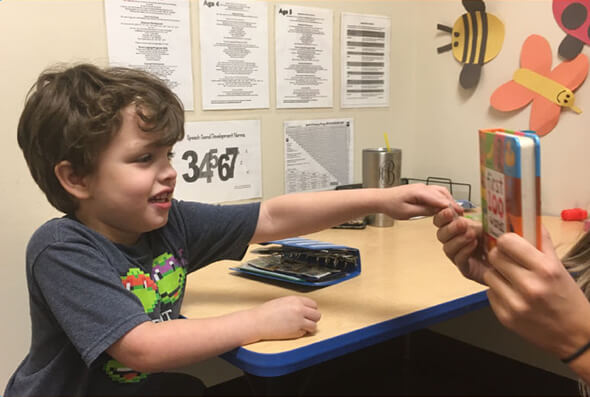
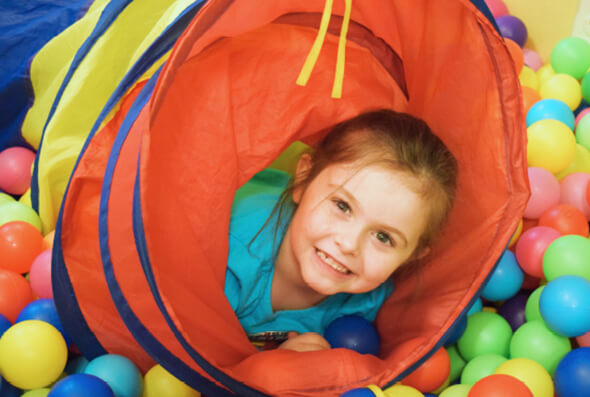
Sensory Integration
We experience the world through our senses. While we generally teach children about five senses (taste, touch, smell, sight, and hearing), there are actually additional senses that are very important to the way we function in the world. Some senses tell us the position of our bodies and others help us keep our balance and remain upright against the pull of gravity. The sensory systems are the gateways of information to and from the brain and body. Some people notice that they cannot hear as well if they cannot see the source of sound. Others may see something moving, like a car, and feel as if they are moving as well. Our bodies and the environment send our brains information through our senses. We process and organize this information so that we feel comfortable and secure. We are then able to respond appropriately to particular situations and environmental demands. This is sensory integration.
KULA’s therapists use sensory integration approaches when providing intervention to address the underlying sensory and motor foundation that help a child learn new skills more easily. Our approach is very individualized to the child’s interests and therapeutic needs. For example, ensuring proper chair and table heights are important for the child who is uncomfortable with his or her feet off the ground. And, the use of deep pressure may be used as a calming strategy prior to nap time.


Strategies for Teaching based on Autism Research (STAR) Program
The Strategies for Teaching based on Autism Research (STAR) Program uses detailed lesson plans, teaching materials, data systems and a curriculum-based assessment for teaching in the six curricular areas of receptive language, expressive language, spontaneous language, functional routines, academic and play and social skills. It uses applied behavioral analysis (ABA) instructional methods of discrete trial training, pivotal response training and teaching functional routines to help children with autism and other developmental disabilities and delays. The STAR Program is both evidenced-based and validated through research.

Explore Specialized Programs
If you're interested in learning more about our specialized programs and how they can benefit your child, please don't hesitate to get in touch with us. We're here to assist you in finding the perfect program for your child's unique needs.
Whether you have questions, need more information, or are ready to enroll your child in one of our specialized programs, feel free to reach out by completing the form below. Our team is dedicated to helping you make informed decisions and providing the support your child deserves.

